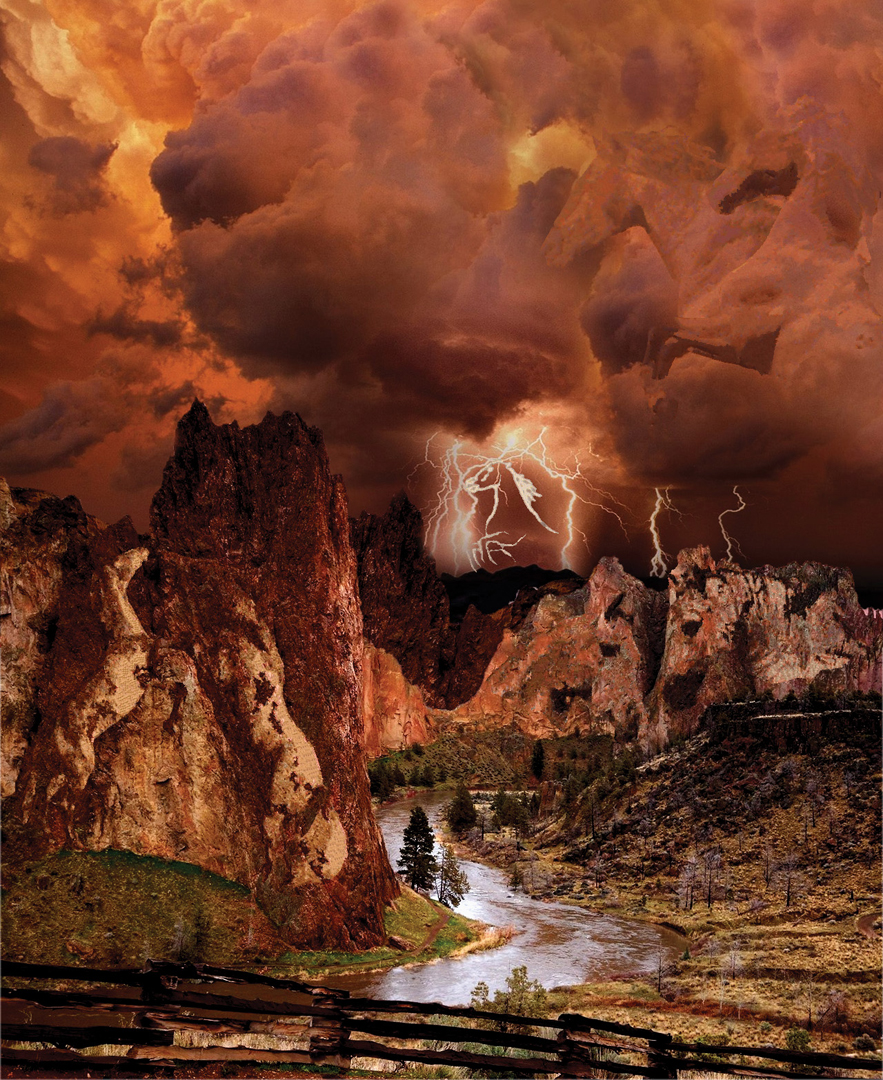“Camouflage images” by Chu, Hsu, Mitra, Cohen-Or, Wong, et al. …
Conference:
Type(s):
Title:
- Camouflage images
Presenter(s)/Author(s):
Abstract:
Camouflage images contain one or more hidden figures that remain imperceptible or unnoticed for a while. In one possible explanation, the ability to delay the perception of the hidden figures is attributed to the theory that human perception works in two main phases: feature search and conjunction search. Effective camouflage images make feature based recognition difficult, and thus force the recognition process to employ conjunction search, which takes considerable effort and time. In this paper, we present a technique for creating camouflage images. To foil the feature search, we remove the original subtle texture details of the hidden figures and replace them by that of the surrounding apparent image. To leave an appropriate degree of clues for the conjunction search, we compute and assign new tones to regions in the embedded figures by performing an optimization between two conflicting terms, which we call immersion and standout, corresponding to hiding and leaving clues, respectively. We show a large number of camouflage images generated by our technique, with or without user guidance. We have tested the quality of the images in an extensive user study, showing a good control of the difficulty levels.
References:
1. Adams, A., Gelfand, N., Dolson, J., and Levoy, M. 2009. Gaussian kd-trees for fast high-dimensional filtering. ACM Trans. on Graphics (Proc. SIGGRAPH) 28, 3, 1–12. Google ScholarDigital Library
2. Boykov, Y., and Kolmogorov, V. 2004. An experimental comparison of min-cut/max-flow algorithms for energy minimization in vision. IEEE Trans. Pattern Anal. Mach. Intell. 26, 9, 1124–1137. Google ScholarDigital Library
3. Boykov, Y., Veksler, O., and Zabih, R. 2001. Fast approximate energy minimization via graph cuts. IEEE Trans. Pattern Anal. Mach. Intell. 23, 11, 1222–1239. Google ScholarDigital Library
4. Carr, P., and Hartley, R. 2009. Solving multilabel graph cut problems with multilabel swap. Digital Image Computing: Techniques and Applications 0, 532–539. Google ScholarDigital Library
5. Chi, M.-T., Lee, T.-Y., Qu, Y., and Wong, T.-T. 2008. Self-animating images: Illusory motion using repeated asymmetric patterns. ACM Trans. on Graphics (Proc. SIGGRAPH) 27, 3, 62:1–62:8. Google ScholarDigital Library
6. Efros, A. A., and Freeman, W. T. 2001. Image quilting for texture synthesis and transfer. In Proc. of ACM SIGGRAPH, 341–346. Google ScholarDigital Library
7. Fang, H., and Hart, J. 2004. Textureshop: texture synthesis as a photograph editing tool. ACM Trans. on Graphics (Proc. SIGGRAPH) 23, 3, 354–359. Google ScholarDigital Library
8. Gal, R., Sorkine, O., Popa, T., Sheffer, A., and Cohen-Or, D. 2007. 3D collage: Expressive non-realistic modeling. In Proc. of NPAR, ACM, 14. Google ScholarDigital Library
9. Hertzmann, A., Jacobs, C. E., Oliver, N., Curless, B., and Salesin, D. H. 2001. Image analogies. In Proc. of ACM SIGGRAPH, 327–340. Google ScholarDigital Library
10. Huang, L., and Pashler, H. 2007. A boolean map theory of visual attention. Psychological Review 114, 599–631.Google ScholarCross Ref
11. Huang, L., Treisman, A., and Pashler, H. 2007. Characterizing the limits of human visual awareness. Science 317, 5839, 823.Google ScholarCross Ref
12. Kaplan, C. S., and Salesin, D. H. 2000. Escherization. In Proc. of ACM SIGGRAPH, 499–510. Google ScholarDigital Library
13. Kolmogorov, V., and Zabih, R. 2002. What energy functions can be minimized via graph cuts? In ECCV, 65–81. Google ScholarDigital Library
14. Kwatra, V., Schödl, A., Essa, I., Turk, G., and Bobick, A. 2003. Graphcut textures: image and video synthesis using graph cuts. ACM Trans. on Graphics (Proc. SIGGRAPH) 22, 3, 277–286. Google ScholarDigital Library
15. Mitra, N. J., and Pauly, M. 2009. Shadow art. ACM Trans. on Graphics (Proc. SIGGRAPH) 28, 5, 1–7. Google ScholarDigital Library
16. Mitra, N. J., Chu, H.-K., Lee, T.-Y., Wolf, L., Yeshurun, H., and Cohen-Or, D. 2009. Emerging images. ACM Trans. on Graphics (Proc. SIGGRAPH) 28, 5, 1–8. Google ScholarDigital Library
17. Oliva, A., Torralba, A., and Schyns, P. G. 2006. Hybrid images. ACM Trans. on Graphics (Proc. SIGGRAPH) 25, 3, 527–532. Google ScholarDigital Library
18. Palmer, S. 1999. Vision Science: Photons to Phenomenology. MIT Press.Google Scholar
19. Pérez, P., Gangnet, M., and Blake, A. 2003. Poisson image editing. ACM Trans. on Graphics (Proc. SIGGRAPH) 22, 3, 313–318. Google ScholarDigital Library
20. Ritter, L., Li, W., Curless, B., Agrawala, M., and Salesin, D. 2006. Painting with texture. In Eurographics Symposium on Rendering.Google Scholar
21. Schaefer, S., McPhail, T., and Warren, J. 2006. Image deformation using moving least squares. ACM Trans. on Graphics (Proc. SIGGRAPH) 25, 3, 533–540. Google ScholarDigital Library
22. Sun, J., Yuan, L., Jia, J., and Shum, H.-Y. 2005. Image completion with structure propagation. ACM Trans. on Graphics (Proc. SIGGRAPH) 24, 3, 861–868. Google ScholarDigital Library
23. Treisman, A., and Gelade, G. 1980. A feature-integration theory of attention. Cognitive Psychology 12, 1, 97–136.Google ScholarCross Ref
24. Treisman, A. 1988. Features and objects: the fourteenth bartlett memorial lecture. Quarterly Journal of Experimental Psychology 40A, 201–236.Google ScholarCross Ref
25. Wolfe, J. M. 1994. Guided search 2.0: A revised model of visual search. Psychonomic Bulletin and Review 1, 2, 202–238.Google ScholarCross Ref
26. Xu, J., and Kaplan, C. S. 2007. Image-guided maze construction. ACM Trans. on Graphics (Proc. SIGGRAPH) 26, 3, 29. Google ScholarDigital Library
27. Yen, C.-R., Chi, M.-T., Lee, T.-Y., and Lin, W.-C. 2008. Stylized rendering using samples of a painted image. IEEE Trans. on Vis. and Comp. Graphics 14, 468–480. Google ScholarDigital Library
28. Yoon, J., Lee, I., and Kang, H. 2008. A Hidden-picture Puzzles Generator. In Comp. Graphics Forum, vol. 27, 1869–1877.Google ScholarCross Ref




